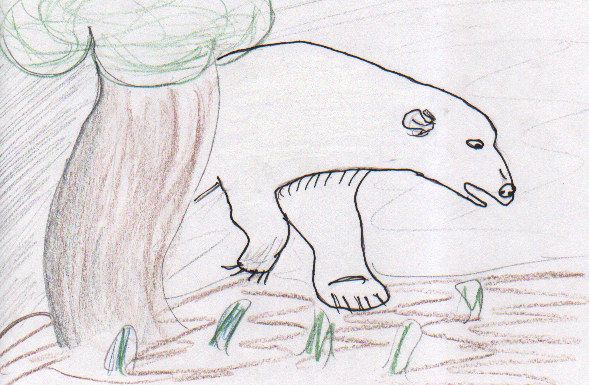 This collection of student work is from Frank Keim's classes. He wants to share these works for others to use as an example of culturally-based curriculum and documentation. These documents have been OCR-scanned and are available for educational use only.
This collection of student work is from Frank Keim's classes. He wants to share these works for others to use as an example of culturally-based curriculum and documentation. These documents have been OCR-scanned and are available for educational use only.Special | A | B | C | D | E | F | G | H | I | J | K | L | M | N | O
P | Q | R | S | T | U | V | W | X | Y | Z | ALL
The Polar Bear by Sophie Ann Moore:Polar bears are the largest members of the bear family. Females grow until they are about four years old and attain maximum weights of about 660 lbs. Males continue to grow until about eight years of age and their weights can be up to 2,000 lbs. The largest recorded Polar bear was a male measuring over 12 feet long and weighing a reported 2,210 lbs. Polar bears live in the Arctic. Polar bears are not like other bears because they swim in very cold water and have webbed hind and front paws. The Polar bear's massive forepaws, up to 12 inches in diameter, are larger than the hind paws and have partially webbed toes for more efficient swimming. An adult's stomach is very large with a capacity for more than 150 lbs of food. With a digestive system typical of carnovires it does not digest starches very well. They mostly eat seals and fish and small whales. They have to swim very fast to catch them. by: Sophie Ann Moore
| |
|




